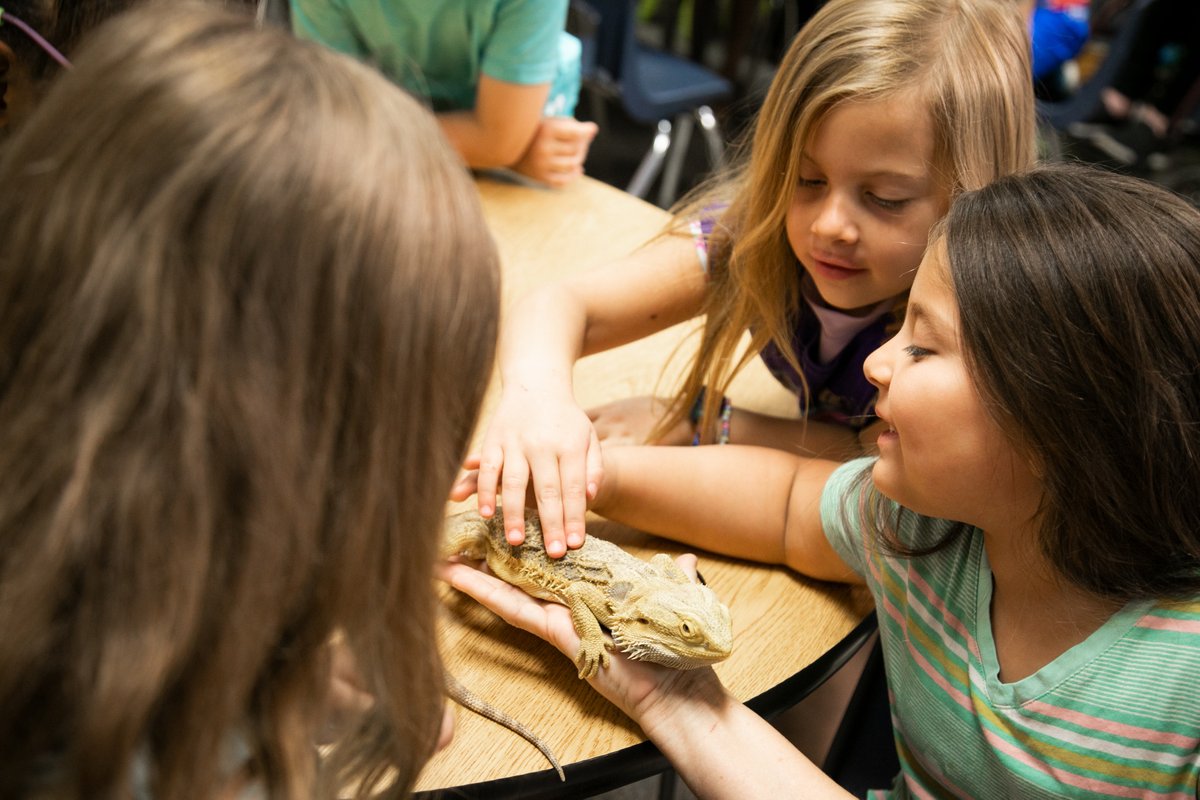The results are in from our annual teacher survey! The Pets in the Classroom grant program surveyed teachers who received funding toward a classroom pet through the program in the past three years, and, as in past years, the results indicate that students are experiencing behavioral and school performance improvements as a result of having a classroom pet! Read the news below:
Teachers Indicate Classroom Pets Help Students
A survey produced by the Pets in the Classroom grant program shows that during the 2021-22 school year, children experienced behavioral and school performance improvements as a result of having a classroom pet.
After a challenging 2021-22 school year, teachers are sharing the impact that classroom pets have had on their students. The Pets in the Classroom grant program conducted a survey this spring of teachers who received funding toward a classroom pet through the program in the past three years. With 1119 teachers throughout the United States and Canada responding, the survey provided valuable insight into the multitude of ways that students are benefiting from interacting with pets in an educational setting.
According to the survey, 99 percent of respondents said that having a pet in the classroom has been a positive experience, and nearly 92 percent would be extremely likely to recommend the Pets in the Classroom program. The results also indicated that classroom pets provide benefits to students in a variety of areas. The data, coupled with the comments that teachers shared through the survey, demonstrate the impact classroom pets are making:
Attendance: Nearly 86 percent of teachers saw an improvement in attendance due to their classroom pet. One teacher shared, “I had a student who was historically tardy or excessively absent. I gave him the job of feeding our bearded dragon daily. He only missed two days of school this year.”
Decreased anxiety: Nearly 95 percent of teachers saw a decrease in anxiety among students. A teacher remarked, “I had many students that dealt with anxiety. Having a place where students could grab a book and just sit with our class pet made such a difference. They would be so calm when they would return back to their work space.”
Empathy/compassion: Nearly 98 percent of teachers saw an increase in empathy and compassion, thanks to a classroom pet. “Students throughout the school struggling behaviorally often get to come visit Kevin and Winter (guinea pigs). I work primarily with children with social-emotional and behavioral special needs. Many of the students are working on developing coping strategies to self-regulate. Students help each other self-monitor because they know stress can be very harmful to our pets and they don’t want their yelling, screaming, outbursts…to harm the pets. They are developing impulse control and empathy.”
Test/academic performance: Nearly 84 percent of teachers saw an improvement in test/academic performance. One teacher stated, “[We’ve had] great improvement in reading test scores because my students would read to our Betta.”
Responsibility: Nearly 98 percent of teachers saw an increase in student responsibility: “One of my students loves our pet so much she volunteers to help clean the cage weekly. She is a child who wouldn’t pick up a pen she has dropped. The connection between the relationship with the pet and the responsibility to keep our pet safe has grown her personal responsibility.”
Self-esteem: Over 93 percent of teachers surveyed saw an improvement in self-esteem in students. One teacher commented, “Our classroom pet has made such a difference in teaching social skills with my students. My students are more aware of the things that are happening around them. Our classroom pet has even helped them strengthen their social skills because talking to the pet has made them feel like they’re talking to a real person. They have had higher self-esteem levels since being exposed to the classroom pet.”
Increased social skills: Ninety-six percent of teachers saw an increase in social skills: “The fish became a way for my students to connect with each other, to work on social skills such as practicing conversation skills, as an icebreaker for my more reserved students to share what they knew about the fish with each other, a way for them to connect to new students.”
Student engagement: Ninety-eight percent of teachers saw an increase in student engagement. One teacher said, “Having pets in the classroom has been such an enriching experience for my junior high students! I teach ecology, and we frequently gather around the tanks to discuss animal adaptations, biomes, ecosystem features and resources, and endangered species. My students also learn in depth about the nitrogen cycle and water-test the aquarium tanks weekly to ensure their health. They have become real scientists doing hands-on field work every week! Such a practical way to make learning come alive for students!”
Decrease in necessary student disciplinary measures: Of the teachers surveyed, 90 percent saw a decrease in necessary student disciplinary measures: “I have a student with severe anxiety and anger issues. His relationship with the class pet has changed his interactions and mindset and we have had a dramatic decrease in negative student-to-student interactions.”
The survey yielded some impressive statistics, but it’s the heartwarming comments shared by teachers about how pets are transforming their students’ lives that truly show the impact of the program — with many of the comments having focused on the social and emotional benefits of classroom pets. As one teacher stated, “My 3rd graders struggled with kindness and anxiety this year coming back to a full day in person. Our class leopard gecko was an excellent opportunity to teach patience, gentleness, and care. Students earned the time to hold and interact with our class pet Kala, and we spent time with Kala every Friday. I will always have a class pet from now on!”
The Pets in the Classroom grant program was established by the Pet Care Trust with the knowledge that classroom pets can be a valuable teaching tool that many teachers do not have access to because of a lack of funding. During the 2021-22 school year, 19,100 Pets in the Classroom grants were awarded to teachers, bringing the total number of grants issued to over 202,697 since the program’s inception in 2010, meaning an estimated 8.1 million children have experienced the joys and benefits of pet care through the grant program. As teachers look for more ways to help with students’ social-emotional needs in the upcoming school year, the Pets in the Classroom grant program is ready to help by providing funding for classroom pets to pre-K – 9th grade teachers across the U.S. and Canada beginning August 1.
Learn more about the Pets in the Classroom grant program by visiting www.PetsintheClassroom.org.




